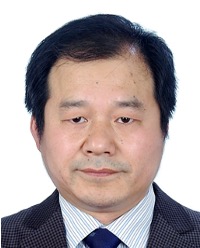The
Stress Corrosion Mechanisms and High Efficiency Evaluation of Materials for
Pressure Boundary Equipment of Nuclear Power Plants
ZHANG
Lefu*,SU
Haozhan,WANG Jiamei,CHEN
Kai,GUO Xianglong,Peter
L. Andresen
School
of Nuclear Engineering, Shanghai Jiao Tong University, Shanghai 200240, P. R.
China
ABSTRACT:
Stress corrosion cracking (SCC) is difficult to be observed in early stage and
quickly leads to failure after initiation. The operation experiences revealed
that nearly 70% of component failure of a nuclear power plant originated from
SCC. SCC has been recognized as the major failure mode of austenitic stainless
steels and nickel base alloys of pressure boundary components. Due to the fact
that SCC significantly affect the safe operation of a water cooled nuclear
reactor, scientists have conducted intensive study for over 5 decays of time.
However, there is still lack of commonly accepted mechanism, no model to
predict the crack initiation time, crack growth rate and remaining life, etc.
The precise or well definition of crack arrest threshold K1SCC is still very difficult. Meanwhile, owing to the
difficulty, high cost, and poor reproducibility of a SCC test under high
temperature and pressure water environment, scientists are facing great
shortage of precise and reliable data for their modelling, engineering design
and safety assessment. The paper focuses on the investigation of the SCC
mechanisms of nuclear power component materials, by applying high efficiency,
low cost testing under simulated operation conditions, to clarify the effect of
dissolved oxygen and hydrogen and impurities in water, microstructure and cold
deformation in material, and testing temperature and load.
Tens
of systems were designed and constructed to conduct the SCC tests on major
materials for PWR primary system components. Each of the system are equipped
with 4 pull rod connected to independent loading machines, and maximum of 5
specimens can be installed on each rods, making a total of 20 specimens in the
autoclave to be tested under the same testing environment, but with 4 different
loading conditions. Water chemistry control and multi-channel online high
precision crack length monitoring system were installed on each system to
control the testing conditions and collecting SCC crack initiation time and
crack growth rates, and further calculate the SCC threshold. The systems can
conduct SCC tests with rod, bar and compact tension specimens. We have tested
the SCC behaviors of austenitic stainless steels and nickel base alloys under
simulated PWR primary water chemistry, and finalized the testing procedures,
helping to obtain reliable data with high efficiency.
Our
results show that loading mode affects the SCC crack growth rate significantly.
Differently data will be obtained under a same setting K value when loading
mode is constant K, ±dK/da or
±dK/dt. When loading with +dK/da, the strain rate at crack tip with be
increased, and hence accelerate the crack growth rate up to 300 times higher.
While, loading with -dK/dt the
crack may suddenly be arrested and stop growing due to the quick drop in K, and
this will lead to a wrong K1SCC data.
Therefore, loading with -dK/da is
recommended to be the good method in a K1SCC
test.
Keywords: Stress corrosion cracking, Nuclear reactor, nuclear grade materials, testing method, SCC threshold.

Lefu ZHANG received his Bachelor, Master and Ph.D degrees in material science from Huazhong University of Science and Technology. He joined School of Nuclear Science and Engineering at Shanghai Jiao Tong University in 2004 after finishing his postdoc research in Japan. He established a joint research laboratory for corrosion of nuclear power materials with Shanghai Nuclear Engineering Research and Design Institute. He developed more than 70 circulating loops for stress corrosion, corrosion fatigue, and water chemistry tests, and the joint laboratory becomes one of the largest in the field corrosion tests under high temperature and pressure water environment. His researches focus on corrosion of reactor materials and water chemistry of PWR nuclear power plant. He is the Chinese representative in Materials and Chemistry Project Management Board of Supercritical Water-Cooled Reactor Systems in Generation IV International Forum (GIF).